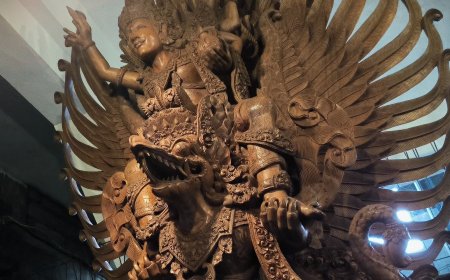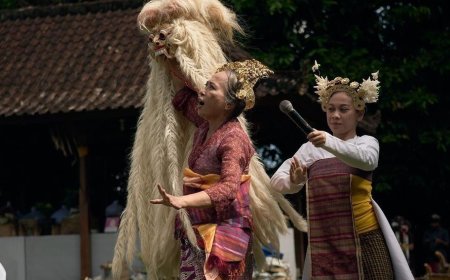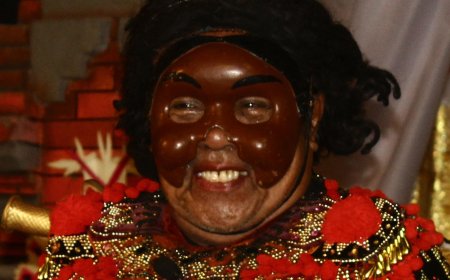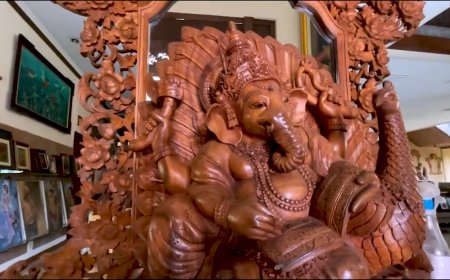Prasi: Beautiful Paintings on Lontar
When talking about comics, perhaps what comes to your mind are comics from America or Japan, but in Indonesia, especially Bali, there is a traditional comic called prasi. Prasi itself is written on palm leaves using a knife called a pengrupak. The method of making it itself is quite unique, namely by carving palm leaves in such a way as to form the desired image, then blackening it using burnt candlenuts. After that, the palm leaves are cleaned using a tissue or cloth, then all the sheets are arranged in a row
Apart from having stunning natural beauty, Bali Island is also an island rich in cultural and artistic heritage. In the midst of the diversity of art on the island of Bali, prasi emerged as a beautiful and unique art form. Prasi combines visual art and story narrative in one amazing medium. Prasi, with its deep roots in Purwa Balinese literature, plays an important role in preserving precious stories and Balinese cultural values.

Sarasvati Prasi (Image Source: Private Collection)
Prasi is one of Bali's treasures that has existed since the 15th century. Prasi itself is included in Balinese Purwa literature, which is in the form of gancaran or prose or stories. This is because prasi is a story equipped with pictures using traditional media in the form of lontar. Prasi is indeed a quite unique work of art, because it not only has aesthetic value, but also literary value which contains religious values and also moral values made in lontar media.
Prasi itself is a combination of two words, namely the word "paras" which means face or face and the word "siwalan" which means palm leaf. Prasi can be directly interpreted as "Face on a palm leaf". From this definition, it can be concluded that prasi are images or paintings made by carving on palm leaves, prasi also contain narratives related to the existing images.

Ramayana Prasi (Image Source: Private Collection)
A prasi usually contains various classical stories, for example the epics Ramayana and Bharatayudha. Prasi craftsmen generally depict epic scenes and the main characters in a story. The image is also supported by a strong narrative.
Not all prasi contain epic stories, there are also prasi which contain tantri stories or fables related to animals as the main characters. Tantri stories are used by Balinese people as a fairly popular means of entertainment. Therefore, prasi contains high cultural value, because it preserves the stories and noble values of Bali.
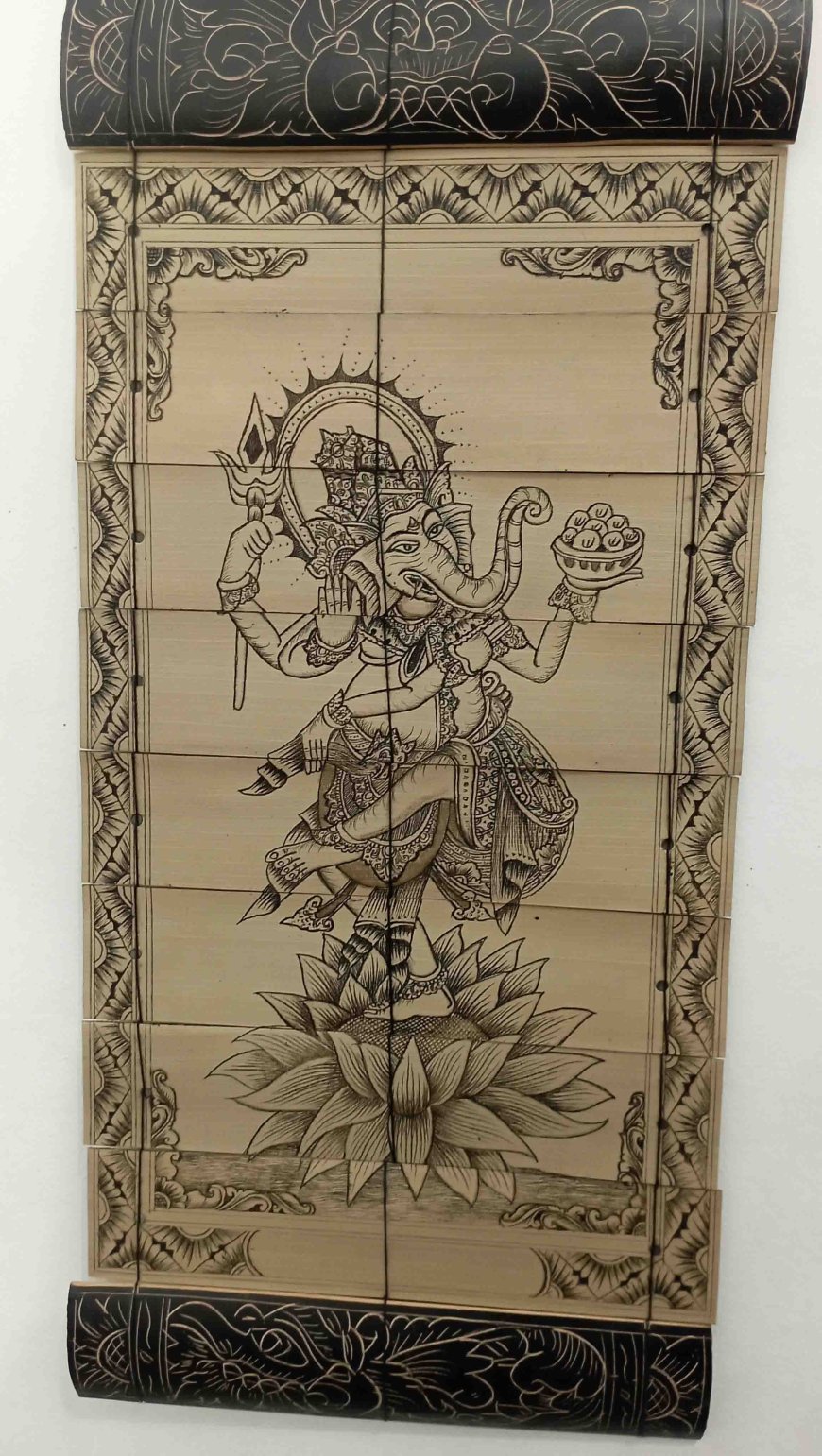
Ganesha Prasi (Image Source: Private Collection)
Prasi itself has various functions or roles in the lives of Balinese people. These functions or roles include, among others, as a medium for entertainment for the Balinese people, with beautiful pictures and in-depth stories that can certainly entertain the audience. Then prasi as a medium for preserving stories that develop among the Balinese people, with stunning visuals prasi can help to maintain the existence of these stories. Then prasi can also be used as a learning medium through the messages contained in the stories told in prasi. Another role of prasi is that prasi are works of art that can beautify a room, prasi can be displayed using frames to decorate the walls. Last but not least, prasi can provide income for the craftsmen. It is not uncommon for tourists, both local and foreign, to buy these works of art as souvenirs. Apart from that, there are usually various exhibitions and museums that display prasi's work. This is certainly very good because it can promote Balinese culture to the wider community.
The way to make prasi is quite unique and different from paintings in general. A prasi is made by carving it using a small knife called a pengrupak. Apart from being unique, making prasi can be said to be quite difficult, because it requires quite high concentration to avoid mistakes, because if there is a mistake you have to start making it again from the beginning.

Pengrupak (Image Source: Private Collection)
After etching the cracker onto the lontar as desired, the next step is to color the prasi using black dye. The black dye used is not ink, but is done in the traditional way, namely by using candlenuts that are burned until charred. The burnt candlenuts are then rubbed onto the carved palm leaves using a cracker. Next, clean the palm leaves using a tissue or cloth. The final step is to arrange the palm leaves in order so that they are sequential. Next, tie the prasi in sequence using rope or thread and also kepeng coins. Don't forget to also provide a bamboo frame with carved Balinese ornaments.
Some famous prasi craftsmen include I Gusti Nyoman Lempad (1862 – 1978), I Gusti Made Deblog (1920 – 2005), I Wayan Bendi (1930 – 2000), and also I Nyoman Mandra (1943 – present). I Gusti Nyoman Lempad is the most iconic lontar craftsman in Bali, this is because of his extraordinary ability in carving prasi, to this day his work is still on display in various art galleries in Bali. Next, I Gusti Made Deblog, he is a prasi craftsman who is famous for his prasi works which have a complex and colorful carving style. His works often depict scenes from the Ramayana and Mahabharata stories. He also plays an important role in preserving prasi because he introduces prasi to the younger generation. The next artist is I Wayan Bendi, he is known for his cheerful and colorful works. It's not surprising because he created quite a lot of prasi works that tell stories about tantri or fables. He also took prasi art in a more contemporary direction. Lastly there is I Nyoman Mandra, he is a prasi artist who is still active. His work often displays fine details and a richness of color, creating stunning works.

Sarasvati Prasi (Image Source: Private Collection)
There are still few Balinese people who know what prasi is, especially the younger generation. Therefore, it is necessary to preserve prasi. There are several ways to preserve prasi, including education and training for the next generation, public promotions and exhibitions, support from various institutions, both government and NGOs (Non-Governmental Organizations) or organizations outside the government, international cooperation, for example with cultural exchange and also world recognition for prasi, and also improving the lives of prasi craftsmen or artists, so that many people want to try to make a prasi. With these steps, it is hoped that prasi can continue to exist and even become a characteristic of the island of Bali.
Prasi is an important aspect of Bali's cultural heritage that should be preserved and appreciated. It is an exclusive form of art and literature that not only entertains, but also teaches noble values. Prasi is a unique way to preserve precious stories and Balinese cultural values in a timeless form through the medium of lontar. So, when you admire a Prasi adorning a wall, remember that it is more than just visual art, it is a doorway to rich history and culture, carved with great concentration on palm leaves. Therefore we need to preserve it so that it continues to exist.





































